A cold case: who can say something about this encryption device?
In 2016, I blogged about an encryption device about which almost nothing was known. Despite many hints from my readers, nothing new emerged. Today I would like to present this cold case once again.
An old device without manufacturer’s specifications and instructions for use, which on top of that is not mentioned anywhere in the literature – this kind of thing often happens in encryption technology. Many encryption devices were built only in small numbers, and the instructions for use were often kept under lock and key for security reasons. Manufacturer logos and similar telltale imprints were not used, so as not to provide any clues to an accidental finder.
The Zero Cylinder
British collector John Alexander showed me one such device in 2016, which I referred to at the time as the “Null Cylinder.” Here is a photo of it:
The zero cylinder was operated in a housing that could be attached to a wall with screws:
More information about the null cylinder can be found here (under the heading “Mystery Device”). Also the author of this page, whom I unfortunately don’t know, obviously doesn’t know anything about the background of this device.
The null cylinder looks like a cipher cylinder. Cipher cylinders were probably invented as early as the 15th century, but they did not become more widespread until the early 20th century. By far the most significant model is the M-94, which was used by the U.S. military primarily in the 1920s. The M-94 looks very similar to the zero-cylinder:
What was the device used for?
With the M-94, each letter ring can be moved individually. With the zero cylinder, on the other hand, several rings are combined in each case. This can be seen in the following picture:
This combination of several rings is puzzling. For encrypting a text like with the M-94 this property is a hindrance. Also for generating a random sequence this construction makes no sense.
John Alexander suspects that the null cylinder served for friend-foe recognition. According to this, one ship or aircraft would have to send a string (today we would call it a “challenge”) to another. The receiver would then have to set the device according to the string and send back a sequence of letters/numbers (“response”) read from the cylinder. If you have an identical device on the other ship or aircraft, you can check for accuracy and thus see that it is not an enemy.
Since there are seven numbered disks in the above picture and the housing also shows two red letters, the challenge could be called E7364512O, for example. The response would be read in the case: MDA1AELI …
But even for friend-foe recognition, it seems nonsensical to combine three or four letter rings into one block. Richard SantaColoma suggested that the letter blocks created in this way are code words. This makes sense. However, you don’t need codewords in friend-foe recognition.
A Cold Case
Back in 2016, I blogged about the null cylinder. While there were over 20 comments, it failed to solve the puzzle. So this is a cold case that I wanted to introduce again today.
Can anyone say more about this device? John Alexander and I would appreciate comments.
If you want to add a comment, you need to add it to the German version here.
Follow @KlausSchmeh
Further reading: Revisited: Enigma’s enigmatic sister
Linkedin: https://www.linkedin.com/groups/13501820
Facebook: https://www.facebook.com/groups/763282653806483/

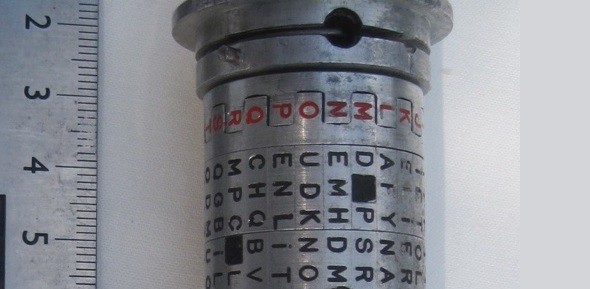
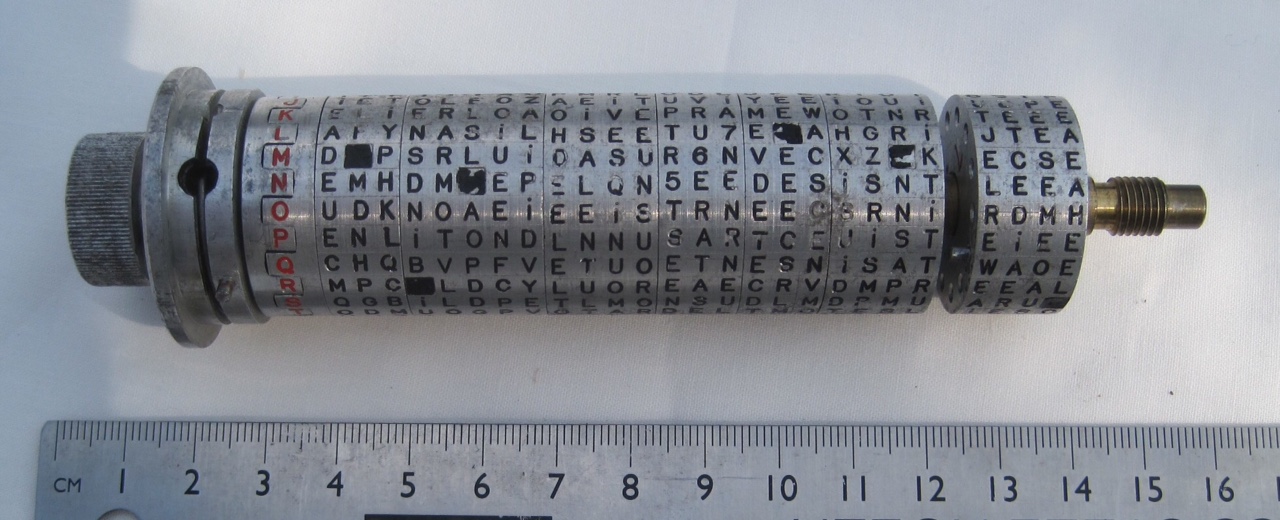
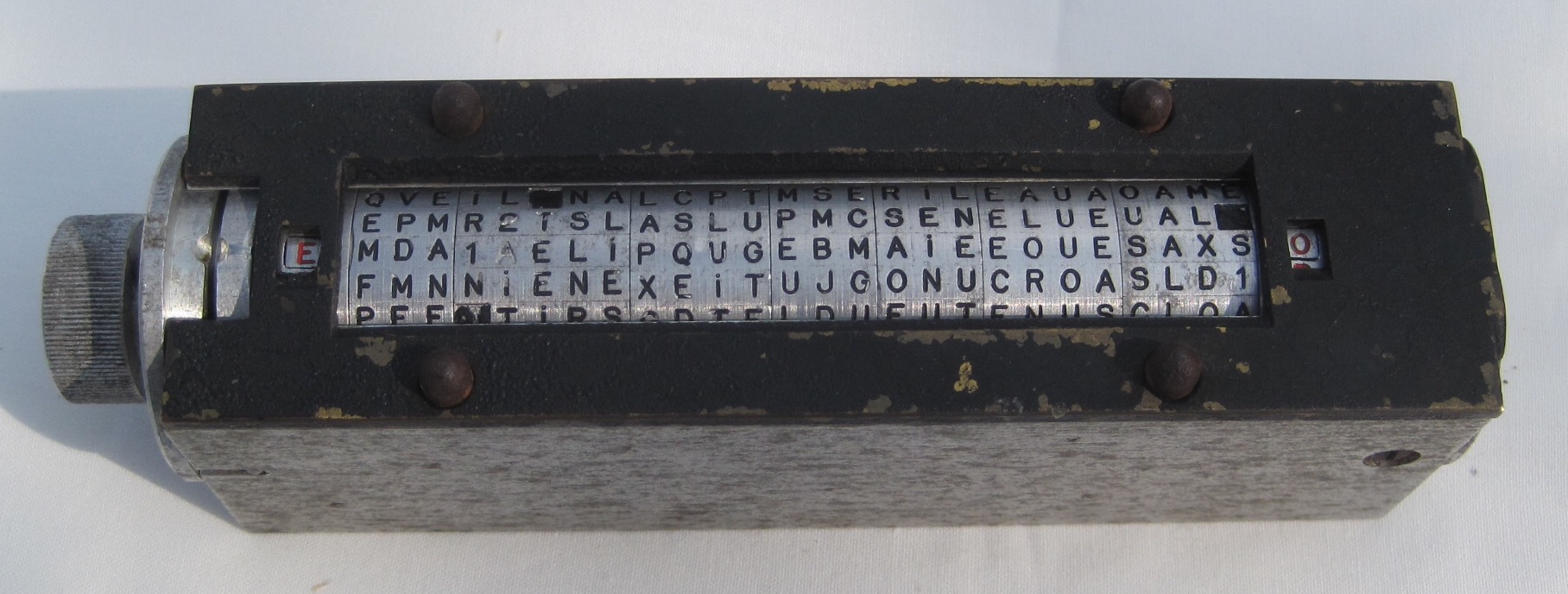
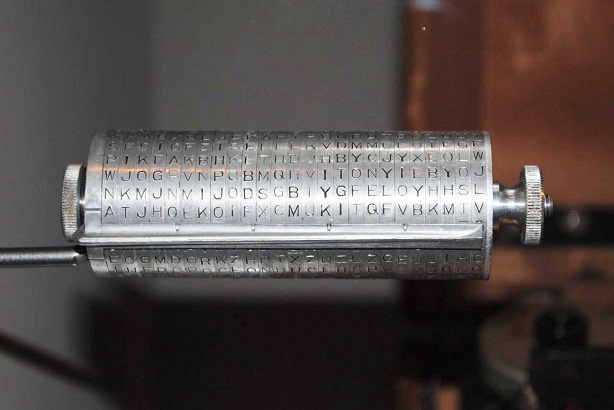
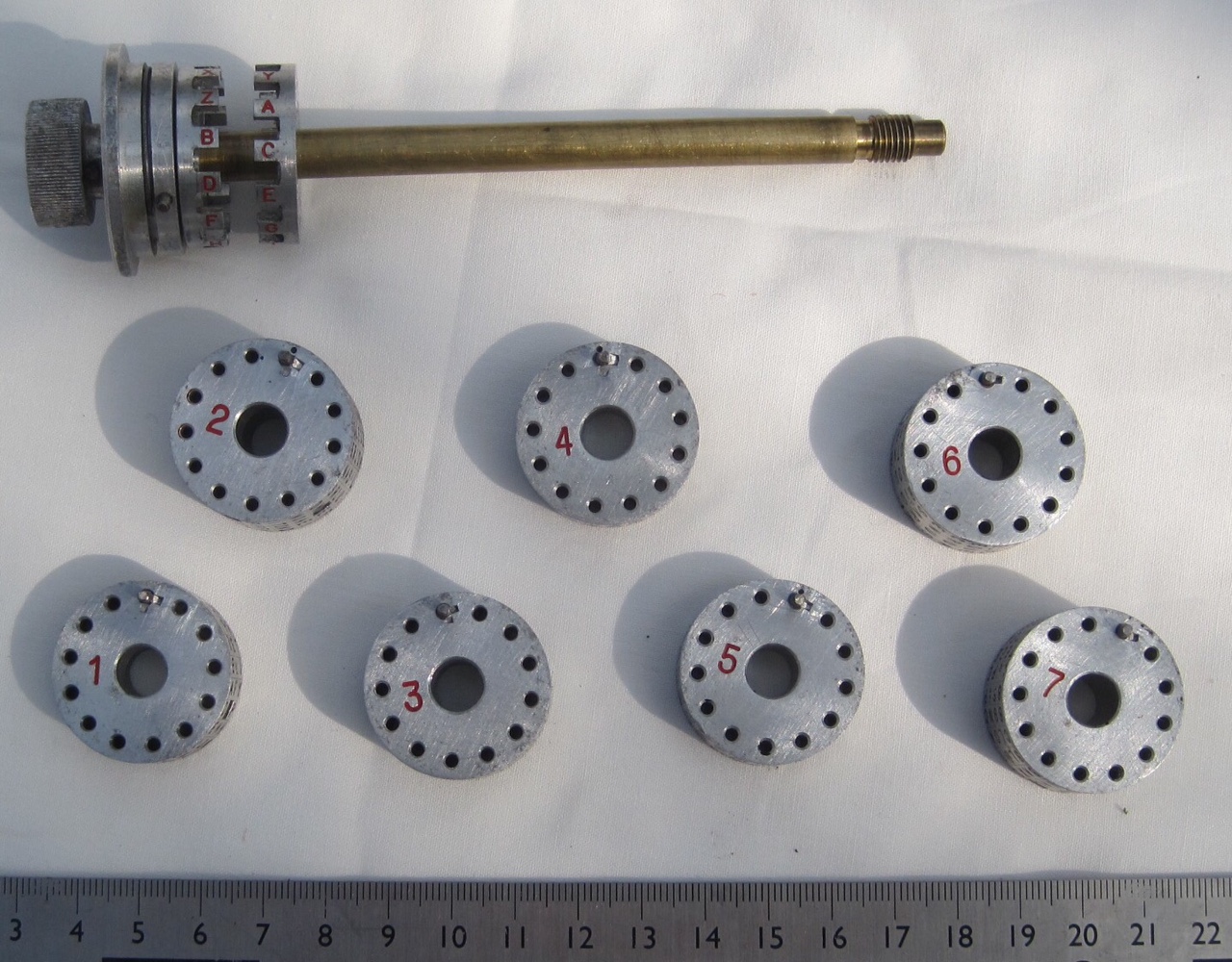
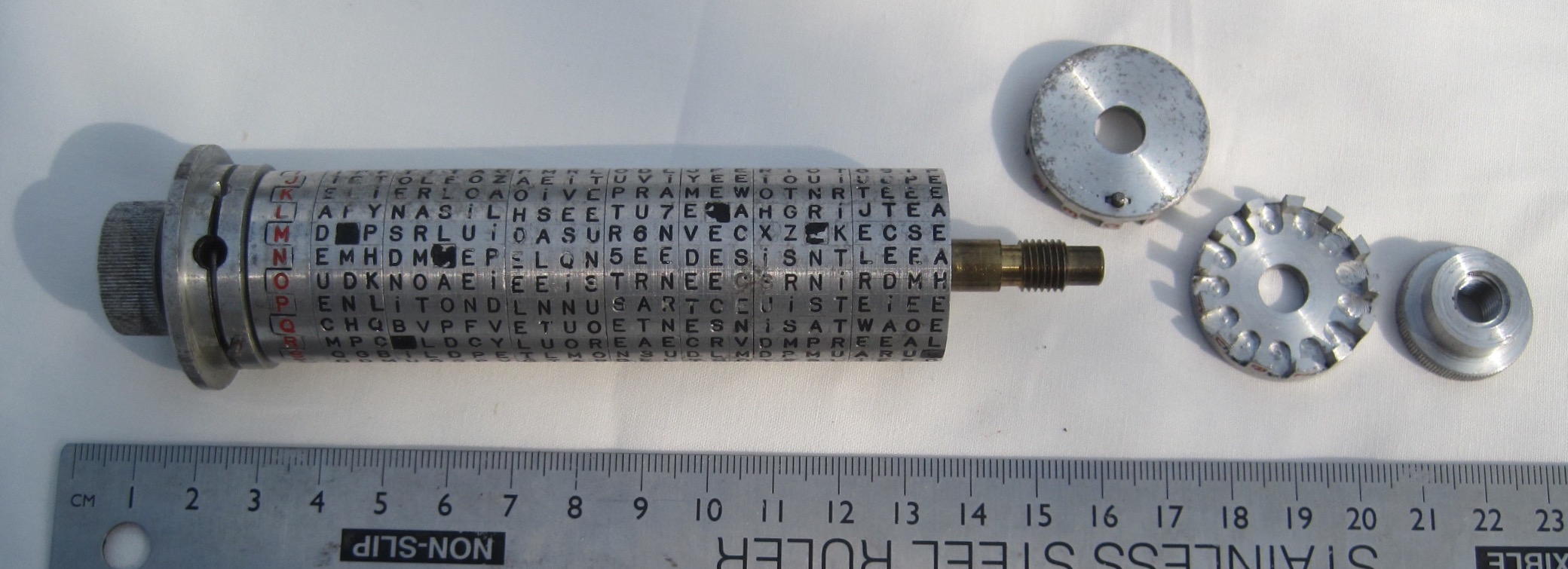

Letzte Kommentare